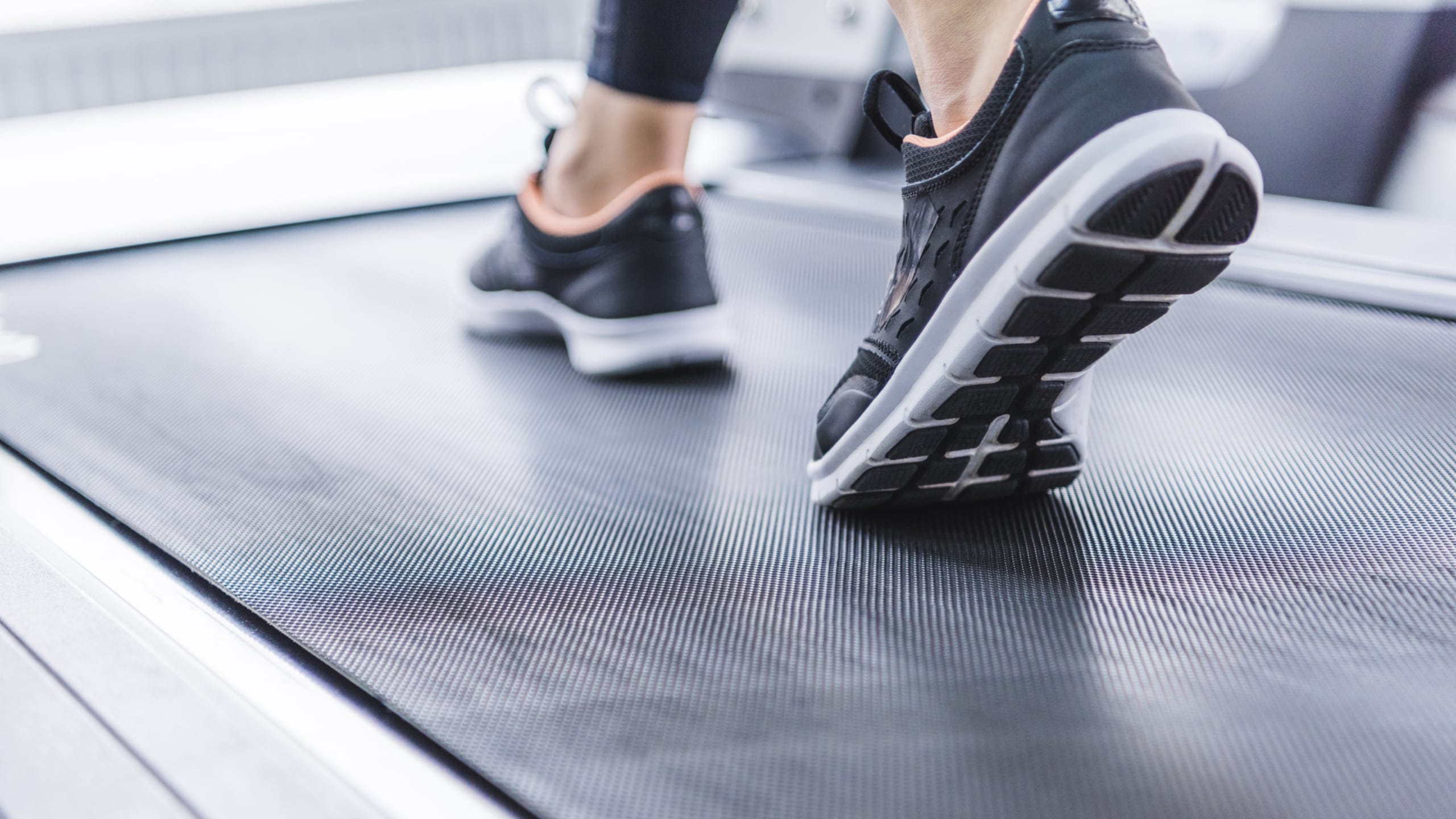

Overall, tailoring fitness programs to accommodate different sensory needs in neurodiverse individuals requires creativity, flexibility, and empathy. By taking the time to understand each person's unique preferences and challenges, we can create an inclusive environment where everyone has the opportunity to thrive physically and emotionally. Through thoughtful planning and collaboration with professionals who specialize in neurodiversity, we can ensure that our fitness programs are truly accessible to all. How to use adaptive equipment to enhance sensory fitness for neurodiverse individualsAdaptive equipment can play a crucial role in enhancing sensory fitness for neurodiverse individuals. By utilizing specialized tools and devices, we can create a more inclusive environment that supports the unique sensory needs of those with conditions such as autism, ADHD, or sensory processing disorder.
For example, some people may be hypersensitive to certain stimuli, while others may seek out additional sensory input to feel regulated. By identifying these preferences and aversions, we can tailor our use of adaptive equipment to provide the right kind of sensory input. There are many different types of adaptive equipment that can be used to enhance sensory fitness. Weighted blankets or vests, for instance, can provide deep pressure stimulation that helps calm an overstimulated nervous system.
Sensory swings or rocking chairs can provide vestibular input that promotes balance and coordination. When using adaptive equipment, it's important to introduce it gradually and allow individuals time to acclimate to the new sensations. Encourage them to explore different tools and find what works best for them in different environments or situations. Consistency is key in building a routine that supports their sensory needs.
Whether at home, school, or in community settings, providing access to these tools can empower individuals to better navigate their environment and engage in activities that bring them joy. By recognizing the importance of adaptive equipment in enhancing sensory fitness for neurodiverse individuals, we can create a more inclusive society where everyone has the support they need to thrive. Let's continue exploring innovative ways to utilize these tools and promote greater understanding and acceptance of neurodiversity. How to make exercise more enjoyable and engaging for neurodiverse individuals through sensory integrationExercise is a crucial component of overall health and well-being for everyone, including neurodiverse individuals.
However, for some people with sensory processing differences, traditional forms of exercise may not be as enjoyable or engaging. This can make it challenging to stay motivated and consistent with a fitness routine. One way to make exercise more enjoyable and engaging for neurodiverse individuals is through sensory integration. Sensory integration involves incorporating activities that stimulate the senses in order to improve focus, coordination, and overall physical wellness.
There are several strategies that can be used to incorporate sensory integration into exercise routines for neurodiverse individuals. One approach is to use equipment and props that provide tactile or proprioceptive input, such as therapy balls, resistance bands, or textured surfaces. These tools can help individuals better regulate their sensory systems while engaging in physical activity.
This could involve playing music during workouts to enhance auditory stimulation, using scented oils or aromatherapy diffusers to create a calming atmosphere, or incorporating visual cues like colorful markers or lights to increase visual engagement. In addition to adding sensory-rich experiences to workouts, it's important to consider individual preferences and sensitivities when designing exercise routines for neurodiverse individuals. Some people may have a heightened sensitivity to certain stimuli, while others may seek out intense sensations.
Overall, the key to making exercise more enjoyable and engaging for neurodiverse individuals through sensory integration is to prioritize individual needs and preferences. By incorporating multisensory elements into workouts and tailoring routines to accommodate different sensory profiles, you can help promote motivation, enjoyment, and success in physical activity for all individuals regardless of their neurodiversity. The Benefits of Neurodiverse Sensory Fitness ProgramsNeurodiverse sensory fitness programs offer a multitude of benefits for individuals of all abilities.
These programs are designed to cater to the unique sensory needs of each participant, no matter their neurology. By incorporating various sensory experiences into fitness activities, these programs provide a holistic approach to physical health and well-being. One of the primary benefits of neurodiverse sensory fitness programs is the promotion of overall health and wellness.
When combined with sensory experiences such as music, lights, or tactile stimulation, participants are more likely to enjoy their workouts and stick with them long-term. Furthermore, these programs can also help individuals regulate their emotions and reduce stress levels.
By providing a structured environment where participants can engage in sensory activities while exercising, these programs help individuals learn how to manage their emotions and cope with stress in a healthy way. Another significant benefit of neurodiverse sensory fitness programs is the social aspect.
This sense of community can be incredibly empowering and supportive for individuals who may feel isolated or misunderstood in other settings. In addition, these programs also promote inclusivity and acceptance among all participants.


By focusing on individual strengths and abilities rather than limitations, neurodiverse sensory fitness programs create an environment where everyone feels valued and respected. This inclusive approach helps break down barriers between people of different backgrounds and abilities, fostering greater understanding and empathy within the community. Overall, the benefits of neurodiverse sensory fitness programs are vast and impactful. From improving physical health to enhancing emotional regulation and fostering social connections, these programs offer something for everyone regardless of their neurology.
How to Create Inclusive Sensory Fitness Spaces for Individuals with NeurodiversityCreating inclusive sensory fitness spaces for individuals with neurodiversity is an important and necessary endeavor in today's world. It is essential to provide environments that cater to the diverse needs of all individuals, including those with sensory processing differences. By understanding and accommodating these unique requirements, we can ensure that everyone has the opportunity to participate in physical activities and enjoy the benefits of exercise.
First and foremost, it is crucial to create a welcoming and comfortable environment that minimizes sensory overload. This may involve using calming colors, providing quiet areas for relaxation, and reducing harsh lighting or loud noises. Additionally, it is important to offer a variety of equipment and activities that cater to different sensory preferences.
For example, some individuals may benefit from tactile or proprioceptive input, while others may prefer visual or auditory stimuli. By offering a range of options, we can ensure that everyone can find activities that they enjoy and feel comfortable participating in. Inclusive sensory fitness spaces should also be designed with accessibility in mind.
Additionally, it is important to provide clear signage and guidance for navigating the space, as well as trained staff who are knowledgeable about neurodiversity and how to support individuals with different needs. Overall, creating inclusive sensory fitness spaces for individuals with neurodiversity requires thoughtfulness, creativity, and a commitment to diversity and inclusion.
Ultimately, by embracing neurodiversity in our fitness spaces, we can promote inclusivity, empowerment, and well-being for all members of our community. The Role of Sensory Integration Therapy in Improving Physical and Cognitive Functioning in Neurodiverse IndividualsSensory integration therapy plays a crucial role in enhancing both the physical and cognitive functioning of neurodiverse individuals.
By incorporating various sensory experiences into therapy sessions, such as swinging, brushing, and deep pressure activities, sensory integration therapy helps individuals regulate their responses to sensory input. This can lead to improvements in motor skills, attention span, emotional regulation, and overall quality of life for neurodiverse individuals.


Physical benefits of sensory integration therapy include improved coordination, balance, and body awareness. Engaging in activities that stimulate different senses can help individuals develop better proprioception and vestibular function, leading to increased confidence in movement and participation in daily activities. Furthermore, the cognitive benefits of sensory integration therapy are significant. By providing opportunities for individuals to engage with their environment in a meaningful way through touch, sight, sound, smell, and taste, this type of therapy can enhance cognitive abilities such as problem-solving skills, memory retention, and social interactions.
By addressing underlying sensory processing challenges through targeted interventions tailored to each individual's unique needs and preferences, therapists can help unlock the potential for growth and development in those with neurodiverse conditions. Through a holistic approach that considers both the physical and cognitive aspects of functioning, sensory integration therapy empowers individuals to thrive in all areas of their lives. Strategies for Incorporating Sensory Activities into Fitness Routines for People with Autism, ADHD, and other Neurodevelopmental DisordersIncorporating sensory activities into fitness routines can be incredibly beneficial for individuals with autism, ADHD, and other neurodevelopmental disorders.
These activities can help improve focus, regulate emotions, and enhance overall well-being. However, it is important to develop strategies that are tailored to the unique needs of each individual. One strategy for incorporating sensory activities into fitness routines is to start small and gradually increase the intensity. For example, you could begin with gentle stretching exercises or simple yoga poses before moving on to more vigorous activities like running or jumping. This gradual approach can help individuals with sensory sensitivities become more comfortable with physical activity over time.
This could include incorporating different textures, sounds, and smells into the environment. For example, you could use textured mats or foam rollers during exercises, play calming music in the background, or diffuse essential oils to create a soothing atmosphere. It can also be helpful to incorporate sensory breaks throughout the workout. These breaks allow individuals to pause and engage in calming activities when they feel overwhelmed or overstimulated.
Additionally, it is important to create a safe and supportive environment for individuals with neurodevelopmental disorders during fitness routines. This may involve providing clear instructions, offering positive reinforcement, and being patient and understanding of any challenges that arise. Overall, by implementing these strategies for incorporating sensory activities into fitness routines for people with autism, ADHD, and other neurodevelopmental disorders, we can help promote physical health and emotional well-being in a way that is inclusive and supportive of all individuals. The Impact of Regular Exercise on Sensory Processing Challenges in Neurodiverse PopulationsRegular exercise has long been touted for its numerous physical health benefits, but recent research has shown that it can also have a significant impact on sensory processing challenges in neurodiverse populations.
ADHD symptoms can persist into adulthood for many individuals, but they may manifest differently or be less severe compared to childhood.
With appropriate support and accommodations, many autistic individuals lead fulfilling lives and can achieve success in various aspects such as education, employment, relationships, and personal development.